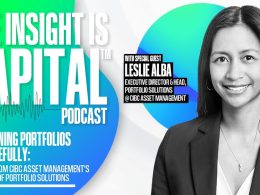How to Ballast a Portfolio with Bonds
Russ and investment strategist Terry Simpson explain how to ballast a portfolio using fixed income, traditional “safe-haven” Treasuries not included.
by Russ Koesterich, Portfolio Manager, Blackrock
If January and early February performance is any guide, there’s a new normal in financial markets today: Heightened volatility.
Earlier last month, stocks fell faster than any deterioration in fundamentals would seem to warrant. Then, as January drew to a close, equities rallied, spurred on not by improving fundamentals, but rather by shifting sentiment after the Bank of Japan (BOJ) announced more aggressive stimulus.
The road has been bumpy for bonds as well, especially those in credit sectors, whose performance tends to be highly correlated with stocks. For instance, the U.S. high yield market, as measured by the Barclays U.S. Corporate High Yield 2% Issuer Capped index, experienced its worst start to a year ever, going back to 1994, Bloomberg data show.
Looking forward, these sorts of abrupt swings in financial markets are likely to continue, amid sluggish economic growth, rising interest rates, high valuations and geopolitical uncertainties.
It’s not surprising, then, that many investors are questioning where to find safety in the markets, beyond just staying in cash. In an earlier post, “Where to Ride Out the Volatility,” I covered three investing strategies to consider today for the equity side of portfolios, opting for defensive sectors not included. But it’s possible to ballast a portfolio using fixed income as well, and not just through Treasuries.
To put the recent volatility in context, it’s worth taking a look back. After the bull market kicked off six years ago, as investors searched for yield amid low interest rates, they increasingly turned toward fixed income credit sectors, such as high yield, investment grade and emerging market debt. These moves were justified given persistent low yields and the fact that these sectors tend to perform well amid economic improvement. However, these trends also created several imbalances. First, it drove up the valuations on many traditional equity dividend plays. Second, increasing credit exposure increases the risk of an entire portfolio due to the greater correlations between equity and credit.
Taking on such risk may be understandable when markets are only moving up, but in a volatile environment like the one we’re in today, having a portfolio of assets that tend to move together can leave investments especially vulnerable. In today’s volatile environment, it’s a good idea to consider building hedges to existing stock and credit allocations with the help of “safe-haven” bonds that are more sensitive to interest rates. In other words, when markets are volatile and there are worries about a recession, interest rate exposure can help offset credit risk in a fixed income portfolio.
The traditional way to do this would be to add exposure to nominal U.S. Treasuries, perhaps the safest of the “safe-haven” bonds, as they’re backed by full faith and credit of the U.S. government. Yet Treasury yields are still testing all-time low levels, and the Federal Reserve (Fed)’s rate normalization cycle is likely to continue, albeit very slowly. In short, these bonds remain both expensive (remember that bond prices and yields move in opposite directions) and vulnerable.
As such, I advocate shying away from nominal (unadjusted for inflation) Treasuries. Instead, I believe it’s prudent to extend allocations in other bond sectors and exposures that offer similar interest-rate sensitivity to Treasuries, but with more compelling investment cases.
U.S. Municipals: This has been the best performing bond sector over the last year, according to Bloomberg data for the Barclay’s Municipal index. Going forward, the sector should be supported by improving fundamentals and lower bond issues. In addition, yields look attractive on a relative basis with long-dated municipals yielding above comparable Treasuries.
U.S. Treasury Inflation Protected Securities (TIPS): I prefer getting duration exposure from TIPS over Treasuries, given the still very low inflation expectations priced into the market. While I don’t see runaway inflation on the horizon, there are some signs of higher prices ahead. For instance, the tightening labor market may be starting to show long-awaited wage gains. Lastly, TIPS, like U.S. Treasuries, are U.S. government securities.
Barclays Aggregate (Agg): Since 2013, many investors have shunned this bond index, believing the Agg’s higher duration or interest rate risk left portfolios exposed to large losses if interest rates shot up. But historically, BlackRock analysis shows, including some Agg-like products can create a more optimal risk-return portfolio. In addition, while the Barclays Aggregate Index is dominated by Treasuries, it also includes agency mortgage securities as well as investment grade debt. In short, it provides a broad, diversified exposure to help balance out equity risk.
Russ Koesterich, CFA, is the Chief Investment Strategist for BlackRock. He is a regular contributor to The Blog.
Terry Simpson, CFA, contributed to this post. He is a Global Investment Strategist for BlackRock.
photo credit: gopixa / Shutterstock












